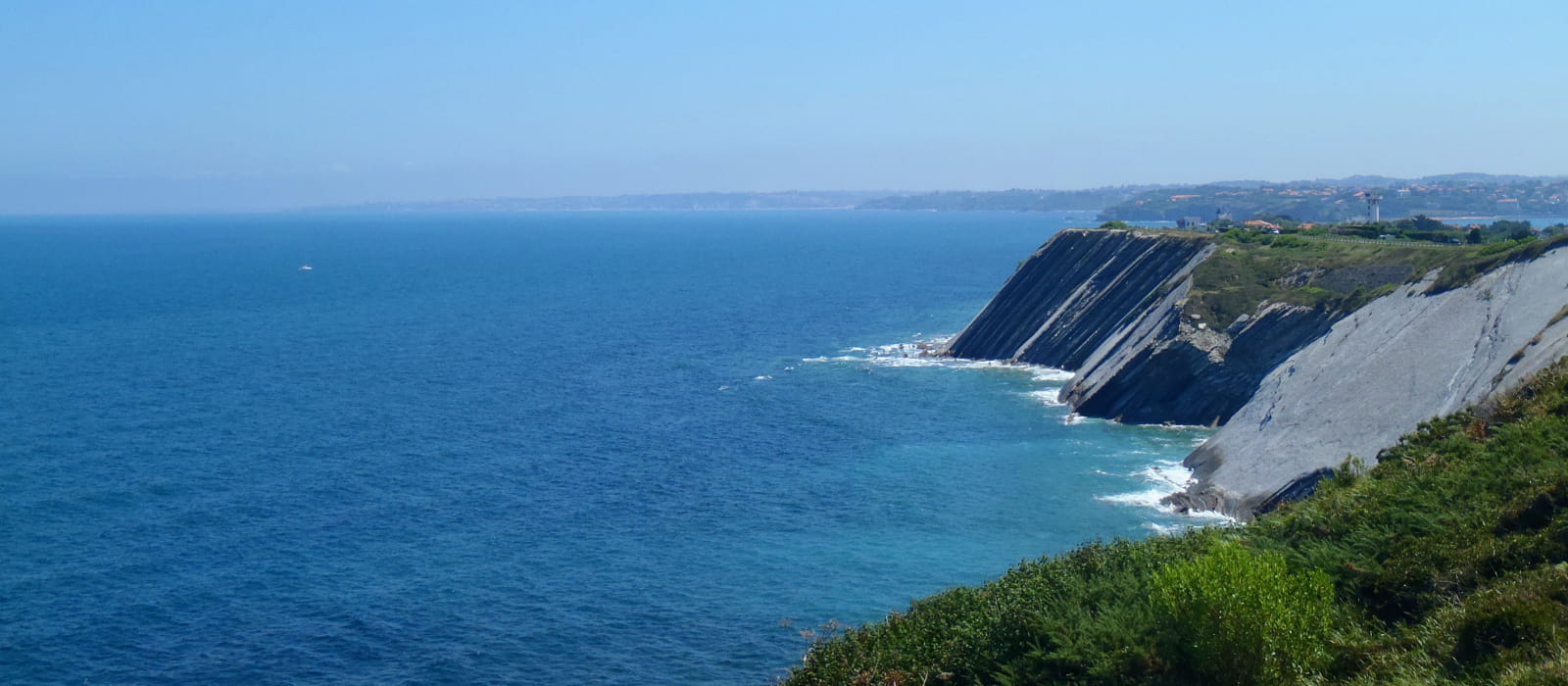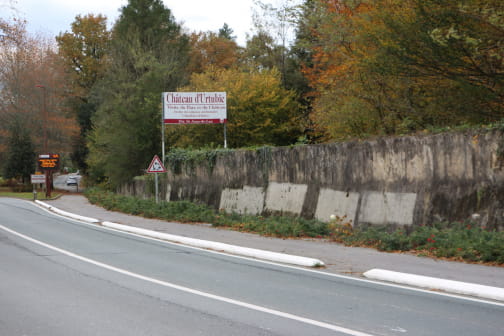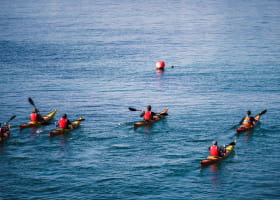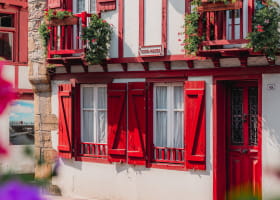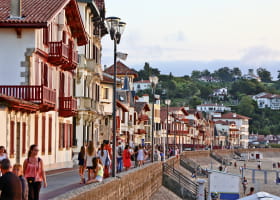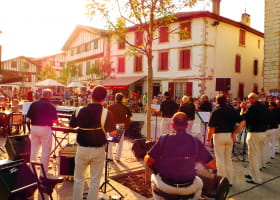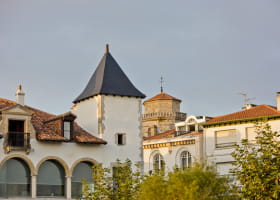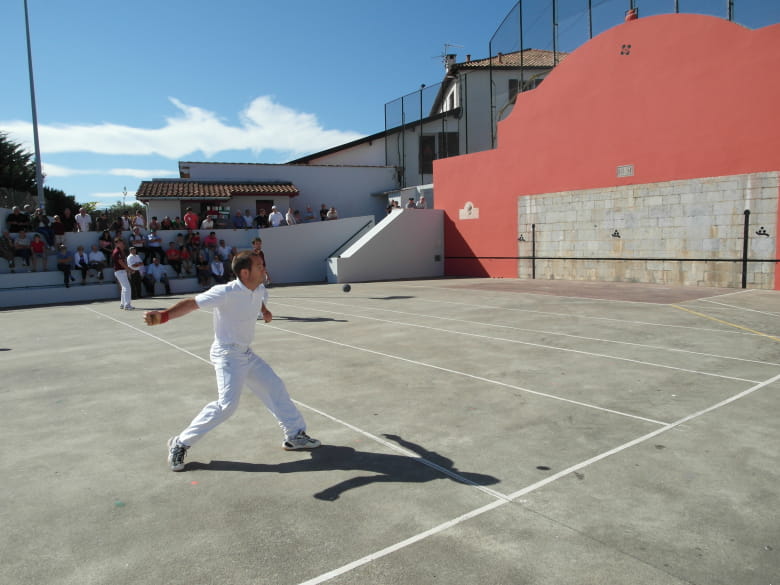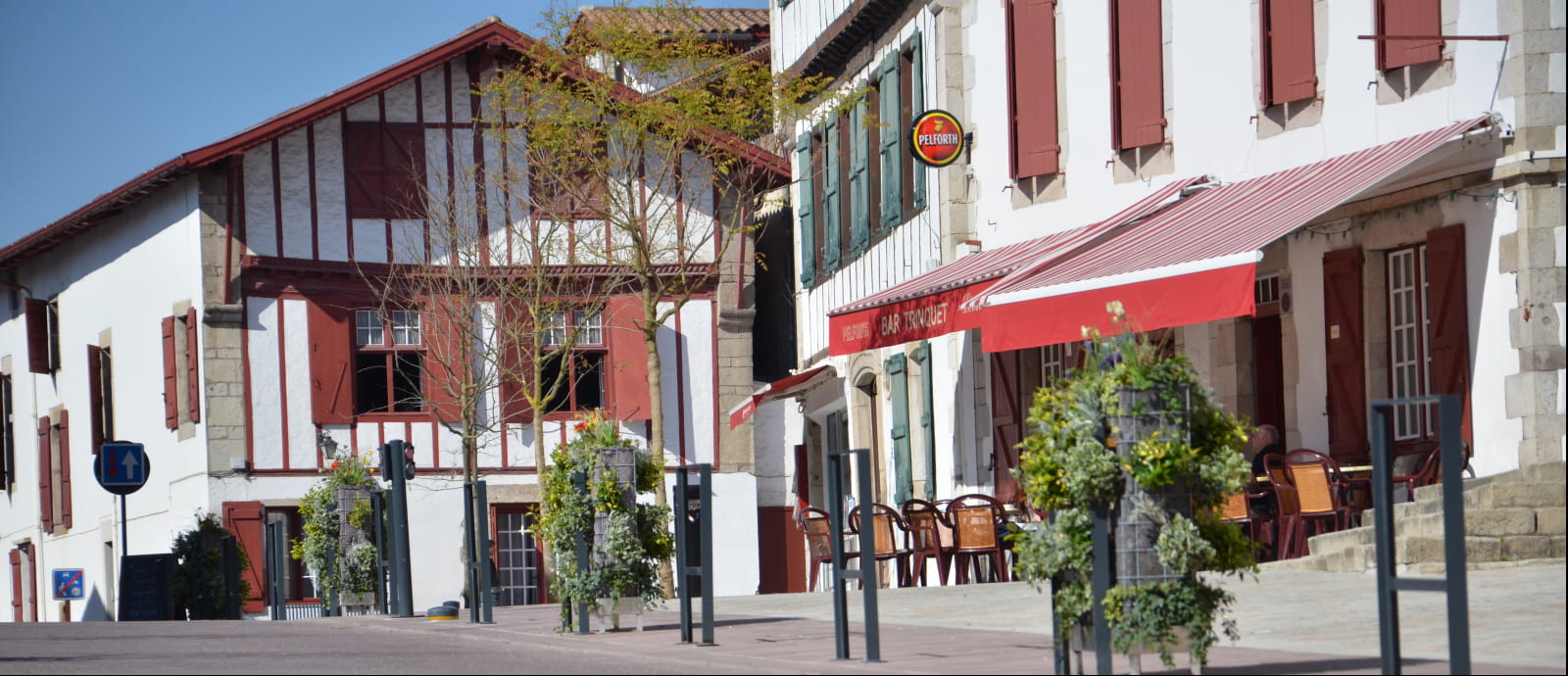
Urrugne
Urruña
The village of Urrugne is fortunate to stretch from the ocean and Basque Corniche cliffs to the first mountains of the Pyrenees. This village has kept its traditions and typical architecture, and offers many opportunities for multiple outdoor activities.
Les Not to be missed
Ezinbestekoak
Agenda
Animazioak
History of Urrugne
Istorioa

The village of Urrugne extends over more than 5,000 hectares. But in the past, it was much larger as it included the towns of Hendaye, Ciboure and Biriatou.
Thus, due to its geographical location, Urrugne was located on the shortest route from Paris to Madrid, 13 days by stagecoach from the French capital. The Posta building, which now houses the Tourist Information Office, was used from 1584 as a post house, that is to say, a place where they changed the horses on the “malle-poste” stage coach.
Due to its closeness to Spain, Urrugne suffered the clashes of multiple wars between the two countries until the Treaty of the Pyrenees was signed on the Île aux Faisans island on November 7 1659 between Louis XIV and Felipe IV, King of Spain. .
Despite this agreement, the Napoleonic wars marked the Urrugne landscape. In the mountains towards the Ibardin mountain pass you may come across remnants such as redoubt fortifications.
There is a residence in the village that bears witness to all these events and relates six centuries of Urrugne’s history. This is Château d'Urtubie which was built in 1341. Personalities from all eras have stayed there: Louis XI in 1463 and Louis XIV, Marshal Soult and the Duke of Wellington...
The village’s coat of arms also recalls Urrugne’s historical past with the lion that is the emblem of the former viscounts of Labourd and the fleur-de-lys which is a symbol of annexation in 1451 by King Charles VII.
Today, Urrugne is a small town with natural landscapes that has preserved its authenticity and traditions. By staying here, you will be able to discover the Basque art of living.
A typically Basque village centre
The village of Urrugne is organised in a traditional way bringing together in its town centre the 3 essential elements of a Basque village: the church, the fronton and the town hall.
Saint Vincent's Church
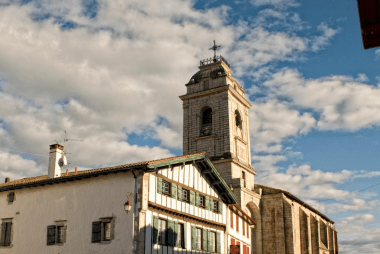
There was a place of worship in Urrugne as early as the 10th century, which was destroyed during 16th century Spanish invasions. The current church was rebuilt in 1550 in a Renaissance style influenced by the cultural architecture of Guipuzcoa (region in the southern Basque Country).
Thus, the new church has a massive defensive style with, in particular, arrowslits at the top of the buttresses.
The porch bell tower rises to a height of 45 m and has a sundial on its facade where the following Latin motto is inscribed: "Vulnerant omnes, ultima necat" which can be translated as "All hours hurt, the last one kills".
The interior of the church is typical of Basque Country churches with its 3 levels of balconies where, by tradition, only men could go.
The church has been listed as a Historic Monument since 1925.

Several changes have been made to the church in Urrugne, the latest being: the installation of a brand-new organ in 2009. Indeed, the old Merklin organ, which dated from 1864, was transferred to the parish church of Saint-Jacques-le-Majeur in Béhobie and replaced by a larger instrument designed for the occasion by organ builder Jean Daldosso from Gimont in the Gers region.
It is an organ whose stops have been laid out over 4 keyboards and pedals, so as to form 5 homogeneous complementary sets.
This "9-ton instrument" has 3,000 pipes and enables musicians to record their pieces on a flash drive.
Organists Jesus and Françoise Martin Moro, from Saint-Jean-de-Luz a town belonging to the same parish as Urrugne, led the project to build the new organ and have created a school and organ festival to keep the association alive throughout the year. Festiorgue welcomes internationally renowned musicians every year and enables the general public to enjoy classical music at affordable prices.
In summer and on National Heritage days, you can enjoy a guided visit of the instrument.
The Town Hall and beautiful Basque houses

In the Basque Country in general, and especially in Urrugne, you will have the opportunity to see beautiful Basque houses called "Etxea".
One of the most remarkable ones is undoubtedly Herriko Etxea: the Town Hall. Built on the central square, around the middle of the 17th century, its architecture is in the traditional Labourdine farmhouse style. The great hall on the first floor was designed, right from the start, for meetings and ceremonies and hosted the Bixintxo ball. Today it is used for town council meetings and weddings.
As for the ground floor (today, the town’s registry office) among other things it was used as the local school during the Second World War.
The fronton: "pilota plaza"

Initially, it was a stone wall. This wall was then raised to become the current fronton.
The large fronton was built in Urrugne between 1848-1850. Its inauguration took place on 18 September 1851 in the presence of 10,000 people and gave rise to three days of celebrations. A second fronton was built later facing the first one and enables ‘rebot’ to be played, a pelota specialty that is played in teams of 5. This fronton has hosted many games including the famous final of the French championship in 1930.
Pelota champions
The great “pilotaris”, Basque pelota players, from Urrugne:
- The Dongaitz family marked the history of pelota in the Basque Country: Jean Dongaitz, bare-hand pelota champion in the 19th century, then his sons Joseph (from 1895 to 1914), Jean-Baptiste (from 1897 to 1925), Léon (from 1902 to 1940) won many championships.
- Halsouet, known as “Eskerra” (the left-hander) and Larre, known as “Ciki” (the little one) have also marked local history as pilotaris and are even represented on the medallion (work of the sculptor Puiforcat) that adorns the Urrugne fronton.
- François Zugasti and more recently champions Paul Zugasti, Jean-Philippe Bideondo and Patrick de Ezcurra have joined this long line of champions from Urrugne.
- Currently, Pascal de Ezcurra is a top-ranking independent player.
Urrugne is therefore proud to have contributed the most famous pilotaris in the history of Basque pelota in the last century.
In summer, every Tuesday evening, you can attend Basque pelota demonstrations
Urtubie Chateau
Ibardin: its Ventas and hiking trails

Located on the Franco-Spanish border, the Ibardin mountain pass separates France from the Spanish Navarre community. The pass is located about 300m above sea level and is easily accessible by road from the Olhette district in Urrugne.
The first venta, a border store, was set up in Ibardin in 1956 and sold only food, tobacco, alcohol, leather and cigarettes. Today, you will find many other ventas there, selling not only food and clothing but also perfume and household linen. It is also possible to have a "Spanish style" lunch there.
One of the advantages of the Ibardin mountain pass is also its panoramic view. Accessible by car, from the top of the Ibardin pass, you have a splendid view of the Basque coast. With a bit of luck, you may also come across a few pottoks, small Basque Country ponies that graze next to the ventas.





